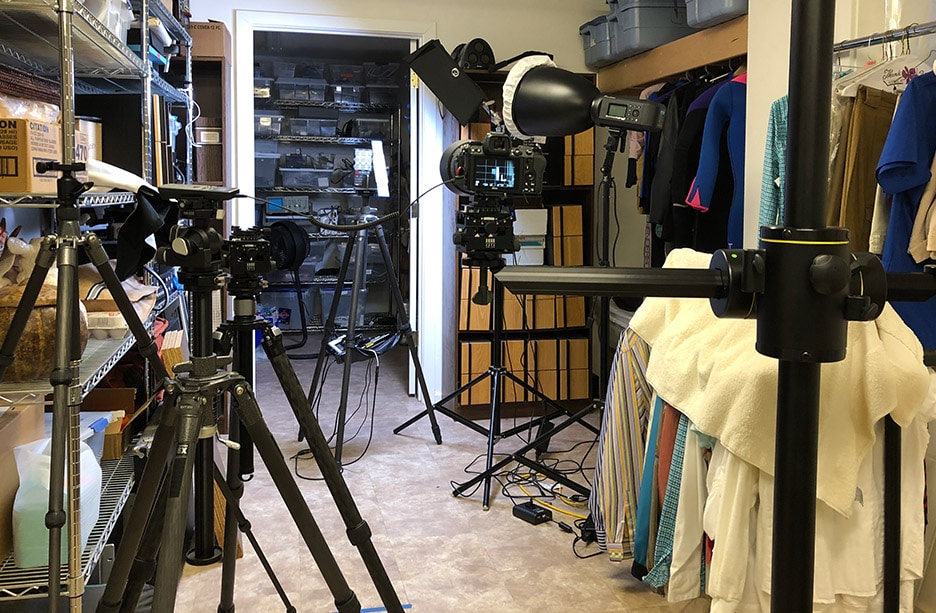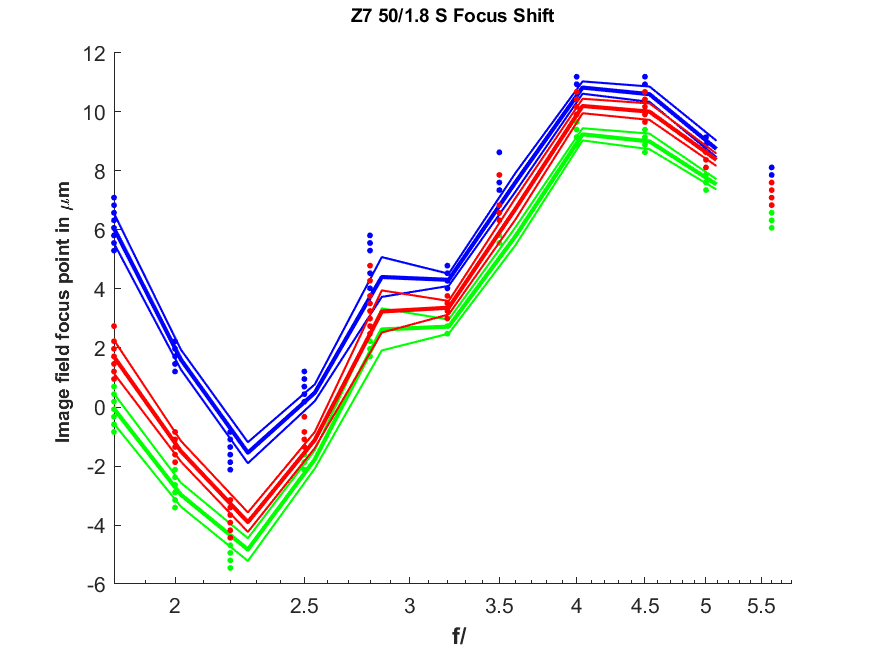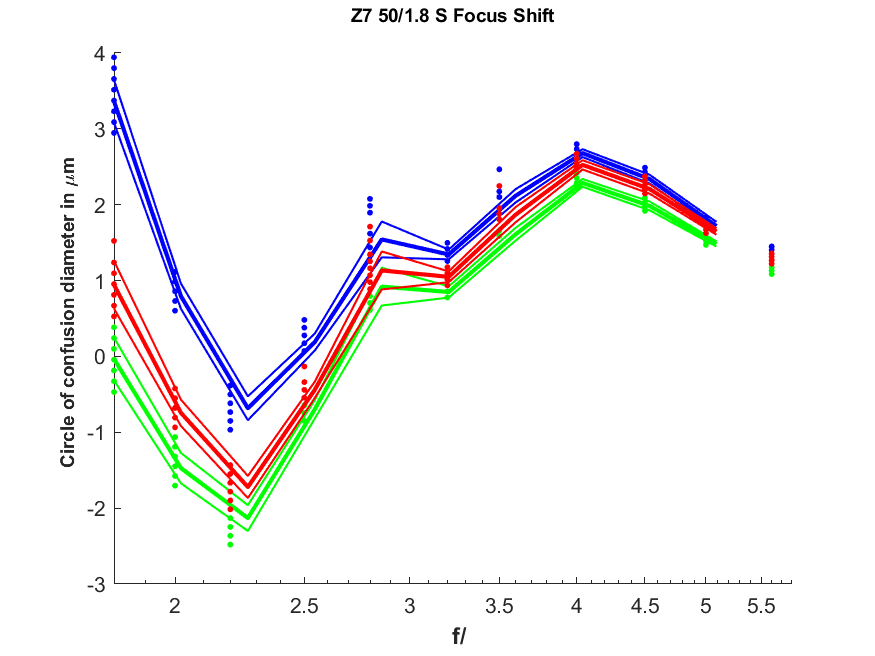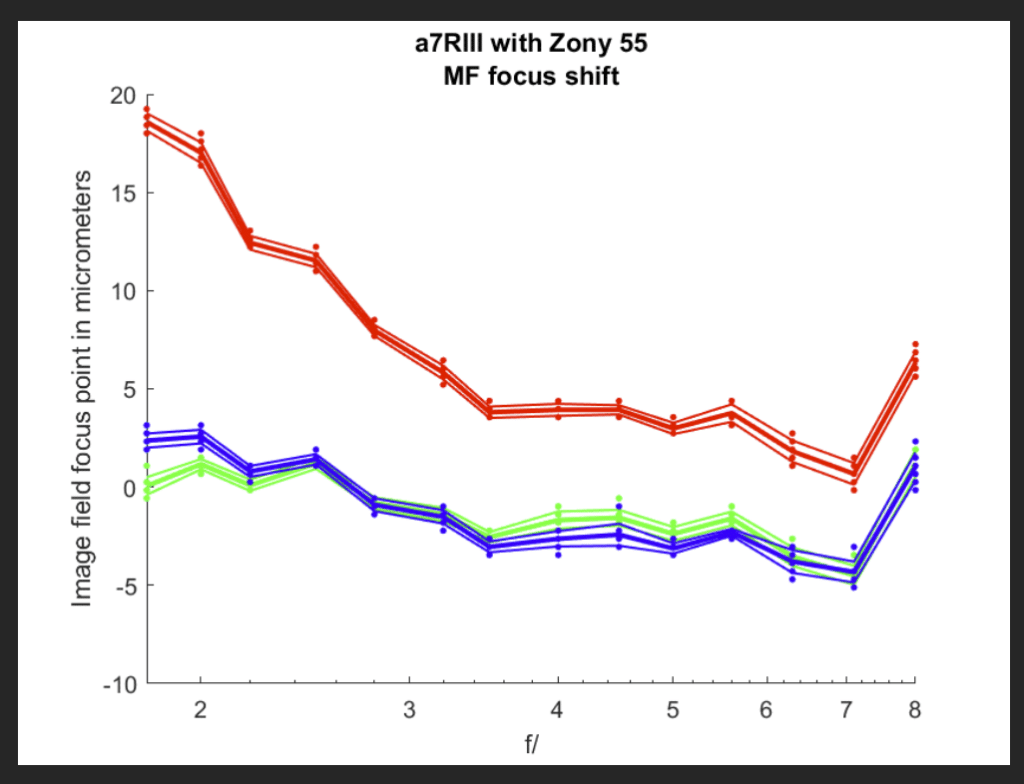This is one in a series of posts on the Nikon Z6 and Z7. You should be able to find all the posts about that camera in the Category List on the right sidebar, below the Articles widget. There’s a drop-down menu there that you can use to get to all the posts in this series; just look for “Nikon Z6/7”.
This is the first lab test of the 50 mm f/1.8 Nikkor S that I’ve done. I mounted the lens on a Z7 body and aimed it at my checkerboard ramp target. The setup looked like this (although this particular picture shows the 105/1.4 on the camera):
Target distance was 1.4 meters. I focused once, wide open, then made 16 exposures at one-third aperture intervals all the way through f/5.6 using the intervalometer that you can see on the left in the above picture. I used electronic shutter and a 4-second interval. I processed the data in my Matlab program, and this is what it spit out:
I’ve plotted the three Adobe RGB color channels. The graph presents the displacement of the image projected on the sensor from the desired green-channel focal plane. Negative numbers indicate front-focusing. The image-plane shift is in micrometers (um). The blue focus locations are separated from the red and green ones because of the longitudinal chromatic aberration (LoCA) of the lens. The dots indicate the results for each of the 16 exposures at each f-stop. I’ve made lines indicating the average (aka mean or mu) of the sample set bolder and added thin lines above and below the means that are one standard deviation (sigma) away from it.
To see the effect on photographs, it’s better to look at the diameters of the circles of confusion (CoCs) implied by the above displacements of the image plane.
In the above graph, I’ve used the convention that negative CoCs indicate front-focusing. Of course, the actual CoC diameter can never be negative. All the focus shift CoCs are under 3 um. The pitch of the sensor is a bit over 4 um, so this is very little focus shift. Focus shift is not too important with the Z7 anyway, since the camera normally focuses at taking aperture for f/5.6 and wider.
The distance between the focus locations of the three color planes is an indication of longitudinal chromatic aberration (LoCA). Wide open, it’s only enough to cause the blue plane to be back-focused to the tune of a 3 um CoC, and it gets better as you stop down. This is an excellent performance.
Compare that with the Zony 55 on an a7RIII:
LoCA is the Achilles heel of the Zony 55, and you can sure see it here.
I am quite impressed with the Nikkor S. For the money, it is a superlative instrument in the testing I’ve done so far.





So, why do you think the Z camera insist on focusing at the selected aperture then? What’s the benefit other than eliminating a bit of focus shift? And, would it be better if Nikon at least offered an option to allow lenses to focus wide open?
The benefit is, as you say, eliminating the effect of focus shift. It appears this lens will not greatly improve focusing accuracy because of focusing stopped down, but it looks like the Nikon designers opted fora one size fits all strategy, unlike Sony.